2025.01.31
Hanami in Japan: Cherry Blossoms or Plum Blossoms?
By Chef Yuuki Tanaka, owner of Ise Sueyoshi — Tripadvisor Best of the Best: Japan #1, World #12.(source).
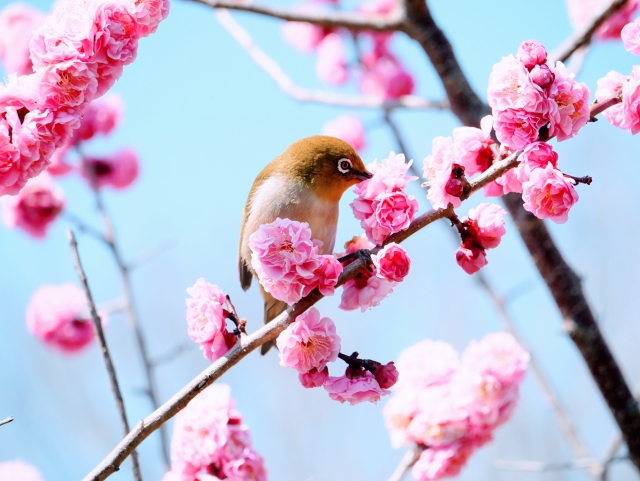
When people think of hanami (flower viewing) in Japan, cherry blossoms immediately come to mind. From late March to early April, countless visitors from around the world travel to Japan to witness the breathtaking beauty of sakura. Parks and riversides across the country transform into delicate pink landscapes, creating an enchanting atmosphere filled with picnics, festivals, and joyful gatherings.
However, long before cherry blossom viewing became the quintessential spring activity in Japan, people enjoyed another type of hanami—the viewing of plum blossoms (ume). In fact, an old saying in Japan states:
“Hanami begins with ume and ends with chrysanthemums.”
This reflects an older tradition where ume viewing was once more popular than sakura. Even today, plum blossoms continue to bloom beautifully across Japan from February to early March, offering a quieter and more serene alternative to the often-crowded cherry blossom season.
Plum Blossoms: The Overlooked Beauty of Japanese Spring
While cherry blossoms symbolize the fleeting nature of life and are deeply connected to themes of mono no aware (the awareness of impermanence), plum blossoms represent perseverance, renewal, and hope. Blooming in the late winter cold, ume flowers announce the arrival of spring even before the first sakura petals appear.
February is even known as “Umemizuki” (梅見月), or “the month of plum viewing,” in Japan. Unlike cherry blossom season, which is short and unpredictable, plum blossoms tend to last longer, giving visitors more opportunities to enjoy their beauty.
Additionally, February in Japan offers more than just ume—it is also an ideal time for winter activities, such as skiing in northern Japan. So, if you’re planning a trip during this season, you can experience both the tranquility of plum blossom viewing and the thrill of Japan’s snowy landscapes.
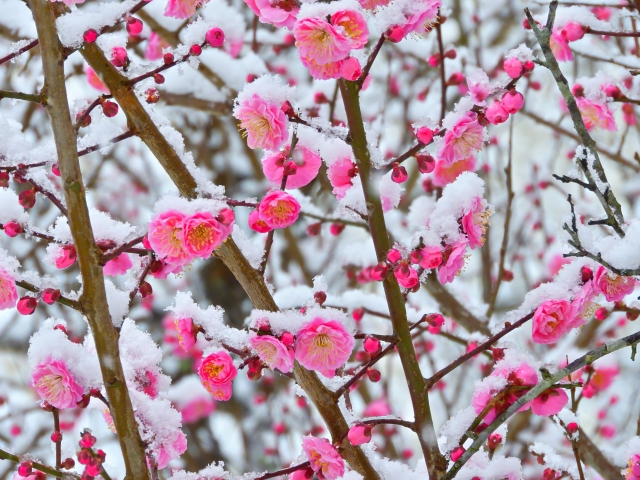
Best Places to Enjoy Plum Blossoms in Japan
If you’re considering visiting Japan in February or early March, here are three must-visit locations to experience the charm of ume blossoms.
1. Kairakuen (Mito, Ibaraki Prefecture)
Located in Mito City, Ibaraki Prefecture, Kairakuen is one of Japan’s Three Great Gardens and is particularly famous for its ume trees. With over 3,000 plum trees in various shades of pink, white, and red, the garden is a spectacular sight in late winter. The annual Mito Plum Blossom Festival (Mito Ume Matsuri) is held from February 11 to March 20, 2025 offering cultural performances, tea ceremonies, and nighttime illuminations.
📍 More information: Mito Kōmon Official Website
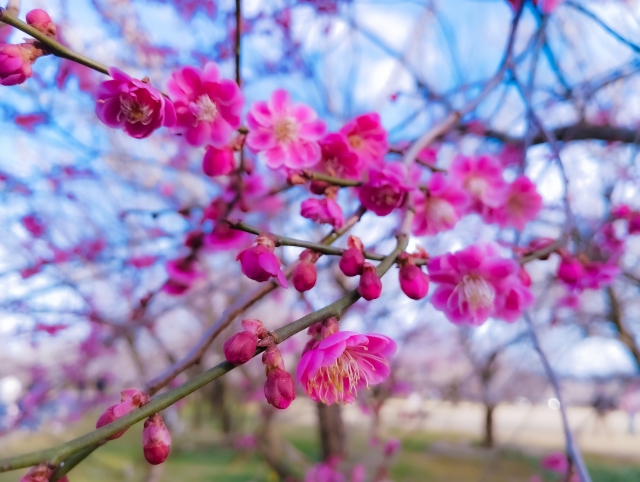
2. Hanegi Park (Tokyo)
For those staying in Tokyo, Hanegi Park in Setagaya Ward is a hidden gem for ume viewing. With more than 600 plum trees, the park provides a peaceful escape from the busy city streets. The annual Setagaya Ume Matsuri (Setagaya Plum Festival) runs from February 8 to March 2, 2025, featuring traditional performances and food stalls selling seasonal treats.
📍 More information: Setagaya Ume Matsuri Official Website
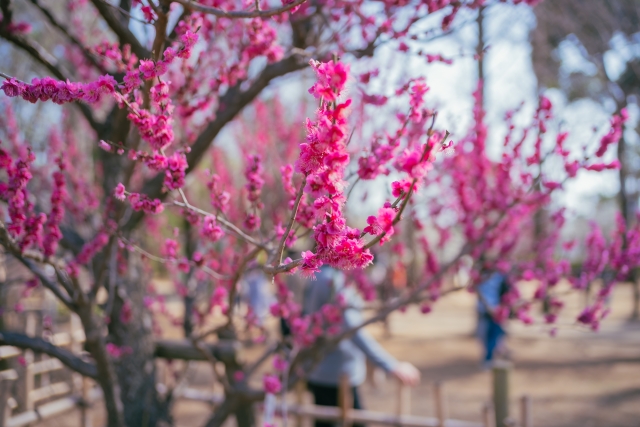
3. Odawara Plum Festival (Kanagawa Prefecture)
Just a short trip from Tokyo, Odawara’s Soga Plum Grove boasts 35,000 plum trees blooming against the stunning backdrop of Mount Fuji. The Odawara Plum Festival (Odawara Ume Matsuri) takes place from February 1 to February 24, 2025, attracting visitors who want to enjoy both nature and history, as Odawara is also home to the famous Odawara Castle.
📍 More information: Odawara city official Website https://www.city.odawara.kanagawa.jp/kanko/event/FEB/umematuri_52.html
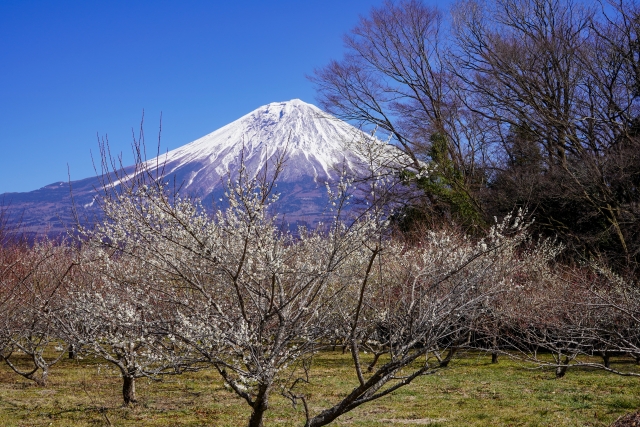
Savoring Plum-Themed Cuisine
The beauty of plum blossoms is not only appreciated visually but also incorporated into Japanese cuisine. Traditional kaiseki (multi-course meals) celebrate the changing seasons by using seasonal ingredients, and in February, dishes featuring ume make their appearance.
For example, at Sueyoshi in Tokyo, exquisite dishes infused with plum flavors mark the transition from winter to spring. Delicate tofu dishes made with plum and appetizers inspired by plums hidden beneath the snow showcase how ume is beautifully integrated into Japanese cuisine. Experiencing a seasonal kaiseki meal adds another dimension to hanami and allows visitors to savor the essence of early spring.
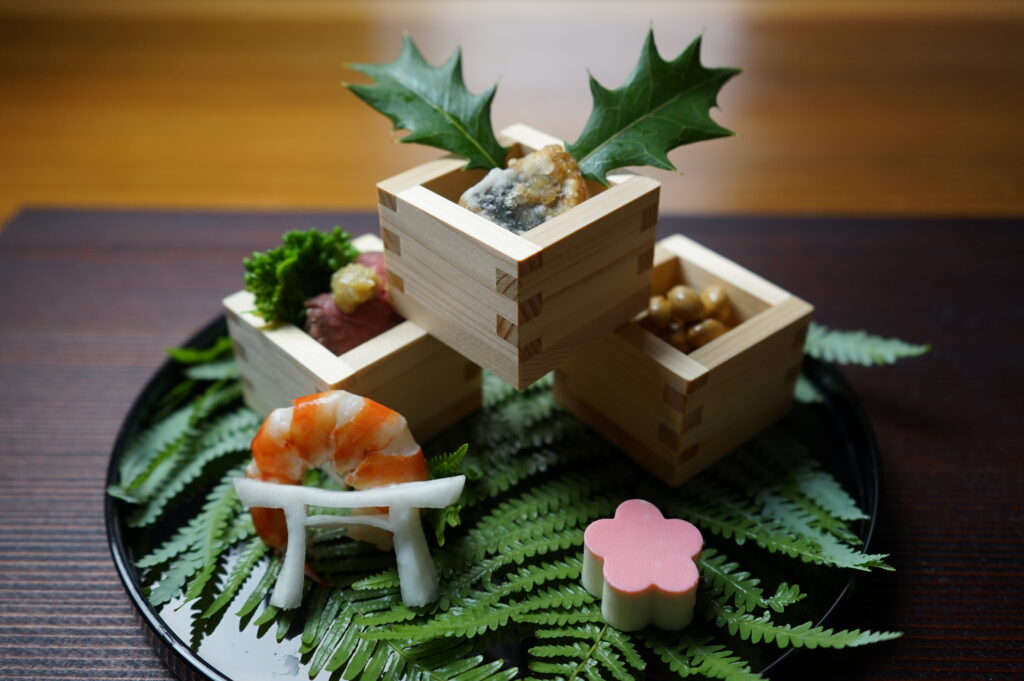
We are proud to continue delivering an exceptional dining experience that earned us the Tripadvisor Travelers’ Choice Best of the Best 2024 award, ranking among the Best Restaurants in Tokyo.
Discover more about our journey to becoming one of the best restaurants in the city [here].

Visit Ise Sueyoshi
Location: Conveniently located 12 minutes from Roppongi Station and 8 minutes from Hiroo Station.
Hours: Open 5:00 PM – 10:00 PM, reservations only. Closed on Sundays and Mondays.
🌸We will be open Monday to Saturday from March through April!
Book Your Experience ☟
Conclusion
At Ise Sueyoshi, we humbly invite you to experience a dining journey that caters to all dietary needs. Whether you’re vegan, halal, or have specific preferences, we are here to create a memorable and inclusive dining experience for you, especially for special occasions like a honeymoon.
Looking ahead to 2025, we promise to continue striving as the “Best Kaiseki Restaurant,” delivering unique culinary experiences that reflect the beauty and depth of Japanese culture. Reservations are now open through the end of 2025. We encourage you to plan early and join us for a special dining experience. May our dishes and hospitality create cherished memories for your journey.
Recommended Blog Posts
On our blog, we offer further insights into Tokyo’s rich food culture and the unique culinary experiences we provide at Ise Sueyoshi. Be sure to check out these recommended posts:
Vegan and Gluten free Options in Tokyo: Inclusive Dining at Ise Sueyoshi
@isesueyoshi
o 🏆 Awarded the prestigious Best Luxury Restaurant by TripAdvisor
o 🌍 Ranked 2nd worldwide, 1st in Japan, and 1st in Asia
o ⭐ Google rating of 4.9 (as of 2024)
o ✅ Vegan-friendly
o ✅ Halal selections
o ✅ Gluten-free options
o ✅ Vegetarian delights
o ✅ Pork-free choices
o ✅ Perfect for pescatarians
o 🌈 Welcoming and inclusive environment for LGBTQ guests
o 🚃 Just a 12-minute walk from Roppongi Station or 8-minutes from Hiroo Station
o ⏰ 5:00 PM – 10:00 PM (reservations-only)
o 📅 Closed on Sun and Mon

